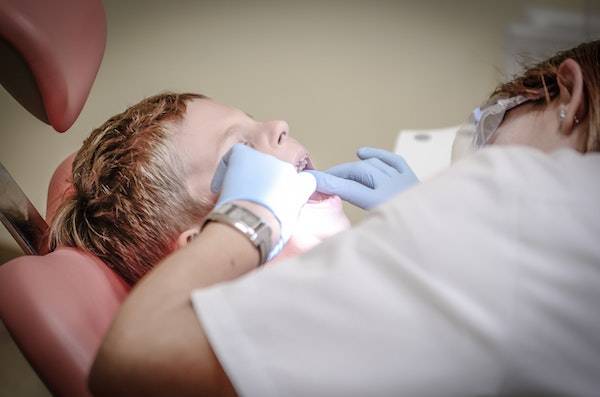Learn how to complete a clinical report, standard medical interview, and physical and TMD examination for all new patients requiring a workup for sleep-disordered breathing.
Clinical Report of Patient or Bed-Partner
Bed partners of patients with obstructive sleep apnea typically report observing multiple episodes of breathing cessation during the sleep of their partners. OSA is also associated with significant impairment in daytime physical and psychological functioning.
The cessation of breathing may appear to be a common snoring disorder, and after imaging the site of obstruction, dentists may determine the patient is suffering from OSA snoring, which is characteristically different from simple snoring.
Examples of daytime impairment related to OSA include excessive sleepiness, fatigue, mood disturbance, and cognitive deficits, as noted in the study observing breathing during sleep in normal middle-aged subjects conducted by Krieger J et al. These effects may result in significant social or work-related difficulties that strain relationships and compromise the quality of life for OSA patients.
Like what you’re learning? Take it a step further and test your clinical diagnosis skills with USC’s Virtual Patient Simulation. Review real-life patient histories, symptoms, and imaging, conduct a medical interview and clinical exam, make a diagnosis, and create a treatment plan for virtual patients experiencing Orofacial Pain conditions.

Excessive Daytime Sleepiness
Excessive daytime sleepiness is a common complaint of OSA patients, and its presence has been objectively documented with the Multiple Sleep Latency Test, explored by Thorpy, Carskadon et al., and C.F Reynolds et al. in their studies
Fatigue and OSA
Less is known about OSA and fatigue, which may significantly impact daytime functioning. Fatigue is sometimes defined as decreased work capacity or diminished energy (physical fatigue). Fatigue could also refer to mental fatigue (e.g., inability to concentrate).
Subjective complaints of fatigue appear to be common among OSA patients. In a study of fatigue and sleep disorders conducted by Lichstein et al., found that in a sample of 50 OSA patients, 78% self-reported frequent fatigue.
In a study on severe obstructive sleep apnea conducted by Kales A et al., they subjectively perceived fatigue among OSA patients that were comparable to that perceived in fatigue-producing medical disorders such as multiple sclerosis and systemic lupus erythematosus.
Like what you’re learning? Download a brochure for our Orofacial Pain and Oral Medicine certificate or master’s degree program.
Medical Interview of a Sleep Disordered Patient
When interviewing a patient regarding whether they have sleep-disordered breathing, you must ascertain if any of the more common co-morbid diseases are present since they indicate and give guidance to how controlled the apnea must be. If major risk factors are present, the apnea must be 100% controlled, but if no risk factors are present, a less strict approach to treatment can be tolerated.
Do risk factors include whether the patient is a high risk for a cardiovascular event (MI or Stroke)? Also, it is important to establish if the patient has a primary care physician and has a current medical assessment for another disease (cholesterol, diabetes, angina, hypertension). Finally, if the patient has been exposed to nCPAP therapy, are they having trouble with using it and why?
Dental & Temporomandibular Disorder (TMD) Examination

In addition to discovering a potential disease, the most common reason you would do a full physical Dental and Temporomandibular Disorder (TMD) examination is that you are working up a patient to see if they would benefit from a mandibular advancing dental device. The physical dental exam will reveal whether the patient has the following conditions that would lower the prognosis of Mandibular Advancement Device (MAD) success:
- Active TM joint dysfunction such as derangement (clicking/limitation) or arthritis (crepitation)
- A tooth grinding or bruxism behavior with strong pressure.
- High jaw muscle/TMJ tenderness.
- Untreated substantial periodontal disease, broken teeth, decay or tooth mobility.
- The adequate protrusive motion of the jaw (equal to or greater than 7 mm).
- Oral tissue disease that would make it difficult for them to wear an appliance.
It is a strong recommendation that no treatment be initiated without a polysomnographic study, but based on the examination data, the decision must also be made as to whether the patent is appropriate for a MAD device or not, which is a subjective decision, and sometimes you will proceed with the treatment knowing that it may not work. In these cases, combination therapy (using APAP plus a dental device or using UPPP plus a dental device) is a better approach. In all situations, the patient should know when they have a good prognosis or a poor prognosis for success with dental device therapy.
Core Elements of MAD Device Determination
- Do they have an active TMJ problem?
- Do they brux with strong pressure?
- Do they have high jaw muscle/TMJ tenderness?
- Do they have TMJ derangement or arthritis?
- Does the patient have periodontal disease or tooth mobility?
- Does the patient have reasonable protrusive motion of the jaw.* (=/>7 mm)
- Do they have any buccal mucosal disease?
- Do they have significant retrognathia?
- Do they have a high mallampati score?
Additional Features to Look For on Dental Exams
- Is the nasal airway obstructed?
- Is the palate/uvula long or inflamed?
- Are there enlarged tonsils?
- Is there micrognathia?
- Is there an excessively large tongue?
- Does the tongue relapse at rest?
- Is there increased cervical lordosis?
- Is there any decreased motor tone?
- Is the patient recently obese?
- Has their shirt neck size changed?
Comorbidities Associated with Obstructive Sleep Apnea
- Are they at high risk for a cardiovascular event (Myocardial Infarction or stroke)?
- Do they have a primary care physician and medical assessment for another disease (cholesterol, diabetes, angina, hypertension)?
- Are they successfully using a Continuous Positive Airway Pressure (CPAP) machine?
- If they have trouble with CPAP, why? Is their Polysomnography (PSG) up to date?
- Do they understand the medical risk?
To follow-up on your suspicions, you can get a nocturnal polysomnogram.
2009 AASM Task Force Guidelines
In 2009, a task force commissioned by the American Academy of Sleep Medicine published guidelines for the long-term care of obstructive sleep apnea in adults. This guideline was designed to assist primary care providers as well as sleep medicine specialists, surgeons, and dentists who care for patients with OSA.
- Questions regarding OSA should be incorporated into routine health evaluations.
- Suspicion of OSA should trigger a comprehensive sleep evaluation.
- The diagnostic strategy for a suspected OSA patient includes a sleep-oriented history, physical exam, and objective testing (nPSG).
- The presence or absence and severity of OSA must be determined before initiating treatment.
- To identify patients at risk of developing the complications of sleep apnea, guide the selection of appropriate treatment, and provide a baseline to establish the effectiveness of subsequent treatment.
- Once the diagnosis of OSA is established, the patient should be included in deciding an appropriate treatment strategy (nCPAP, oral appliances, behavioral treatments, or surgery).
- OSA should be approached as a chronic disease requiring long-term, multidisciplinary management.
Earn an Online Postgraduate Degree in Orofacial Pain and Oral Medicine
Are you interested in a variety of issues focused on orofacial pain, medicine and sleep disorders? Consider enrolling in the Herman Ostrow School of Dentistry of USC’s online, competency-based certificate or master’s program in Orofacial Pain and Oral Medicine.


